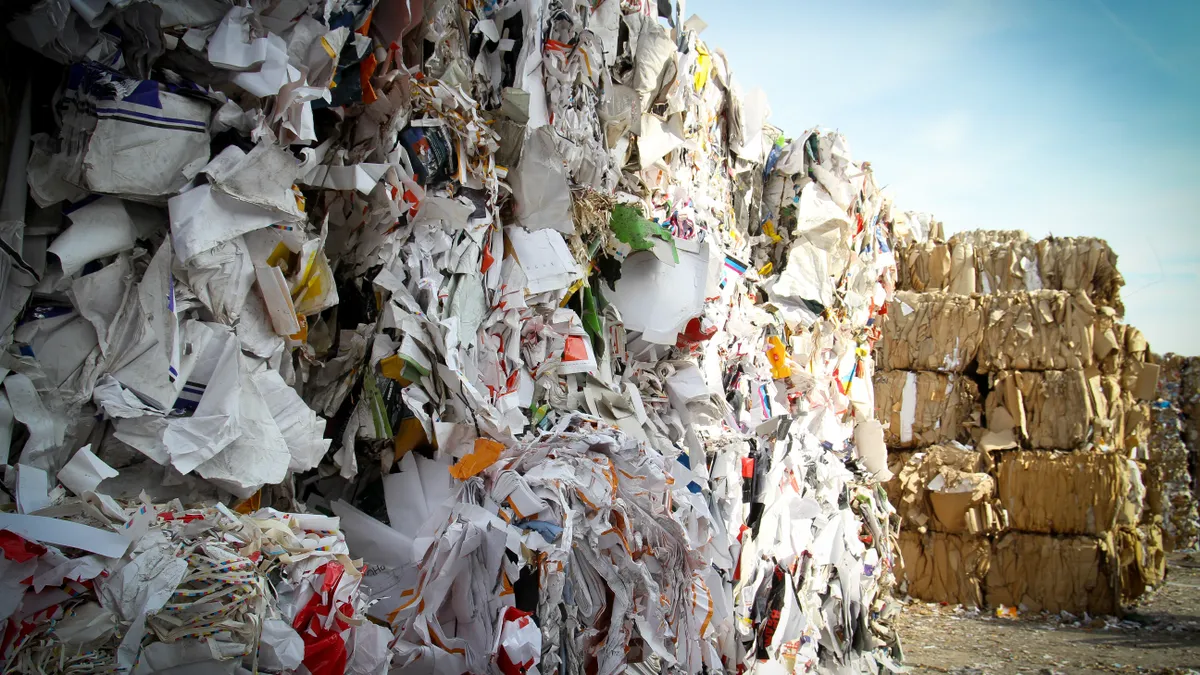Dive Brief:
-
An energy developer is planning to build a "green hydrogen" facility in Southern California, that can convert waste material into hydrogen
-
The plant will process 40,000 tons of waste every year, and have the capacity to produce up to 3.8 million kilograms of hydrogen per year, the company, SGH2 Energy, announced Wednesday. It intends to sell the output to owners of hydrogen refueling stations in the state.
-
Clean hydrogen is likely to play a big role in deep decarbonization, Rachel Fakhry, policy analyst with the Natural Resources Defense Council's climate and clean energy program, told Utility Dive. "It's important that state policy-makers start valuing that potential role, and thinking about the right policies to get us there to scale up the industry," she added.
Dive Insight:
SGH2 and the city of Lancaster have signed a memorandum of understanding according to which the city will co-own the hydrogen facility and provide it with a guaranteed feedstock of recyclable waste. The city is estimated to save between $50 to $75 per ton of that feedstock in landfill costs.
The plant is estimated to take 18 months to construct and is scheduled to be fully operational in the first quarter of 2023, after which its output will be sold to hydrogen refueling stations for light and heavy-duty fuel cell vehicles in California, the company said in a press release.
Around 70 million tons of hydrogen is being used around the world today, Robert Do, CEO of SGH2 told Utility Dive, most of which is derived from either natural gas or coal. But the Lancaster plant will instead produce hydrogen by gasifying waste material using plasma torches, an "industrial tool that can raise the heat to very high levels," he explained.
The process produces both carbon monoxide and hydrogen. The latter is separated, purified and sold, while the former is used to generate power to run the plant, so that it runs on its own energy. While the technique does release carbon dioxide into the air, that carbon is "biogenic," meaning it's part of the carbon cycle rather than coming from fossil fuels, Do said.
This technique has several advantages over producing hydrogen through electrolysis, the process of splitting water into hydrogen and oxygen, according to Do, including requiring less energy and less land to build a facility. And while the company's current focus is to sell hydrogen for transportation, "there are major needs for hydrogen that [are] not being looked at — number one is to decarbonize California," by injecting it into the gas grid, he added.
The facility is a proof-of-concept plant but if it works as it's supposed to, "I see these all over the nation — if not the world — because it takes care of your waste problem, or certainly puts a dent in it," Rex Parris, mayor of Lancaster, told Utility Dive. He noted that the plant is being built on a five-acre site and is scalable — "wherever you can spare five acres, you can put one of these things up."
Fakhry concurred that hydrogen can play a huge role in the clean energy transition. Currently, hydrogen is mostly used in refining, as well as agriculture, she said. But the resource is also being touted as a potential big player in decarbonization, for two reasons: It has very high energy density, and shares some characteristics with fossil fuels — like allowing for long-duration storage — but can also be a zero or low emission resource.
The biggest value for hydrogen is likely to be in hard-to-electrify sectors, like aviation, shipping and heavy industry, according to Fakhry.
With hydrogen, heavy-duty trucks that travel hundreds of miles a day, for instance, won't need to carry heavy batteries and stop for long periods of time to recharge. The resource can also help integrate high percentages of renewables — excess solar and wind can be used to run electrolyzers, producing green hydrogen. And hydrogen can be stored underground fairly easily for months on end, meaning it can provide long-duration, seasonal storage.
But converting waste to hydrogen is a fairly new technology and could present some complexities, according to Fakhry — for instance, the process produces both carbon monoxide and carbon dioxide, and capturing and properly handling these is something to take into consideration.
"Another issue with biomass gasification is in the case of biomass in general, there's a lot of contention around is [it] really a renewable resource — what is the proper accounting for what is sustainable versus not sustainable? It's tricky to determine," she said.














